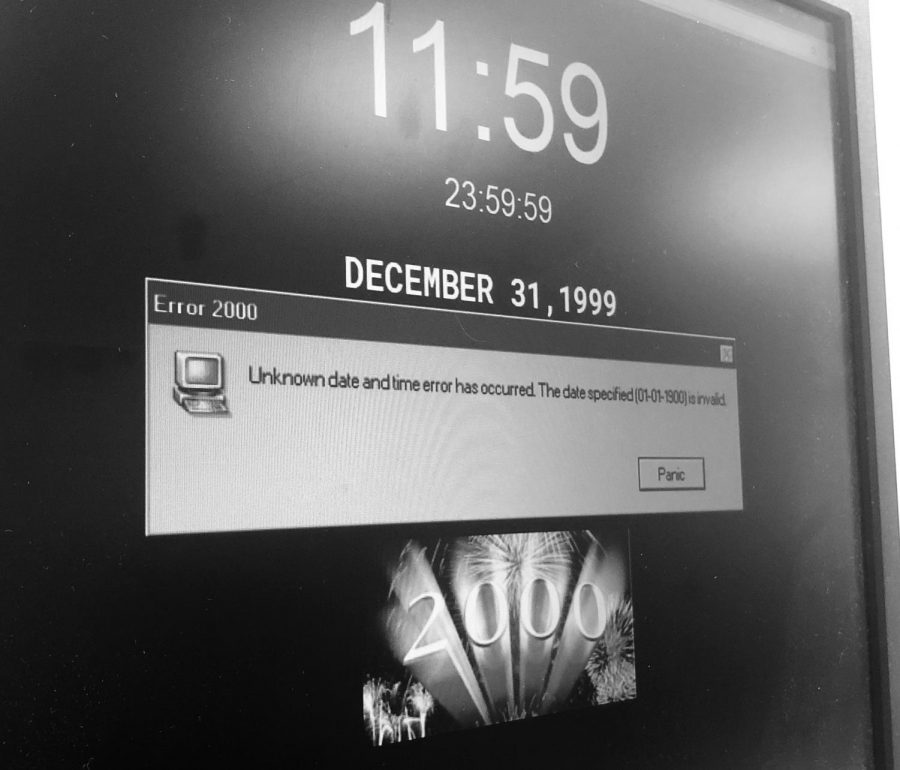Y2K? Not today! Looking back on the Millenium Bug 20 years later
Leading up to Y2K, everyone held a unique theory about what would happen when the new millennium began. Some thought planes would fall out of the sky, or that Russia would accidentally fire missiles at us. Doomsday preppers hoarded food and water, withdrew their money from banks, and built bunkers to hide out in for when the chaos they predicted would ensue worldwide.
May 17, 2019
The 1990s— a decade replete with Beanie Babies, boy bands, beepers, and… a sense of impending doom? With the year 2000 quickly approaching, computer users and programmers feared that their software would mistake 2000 for 1900, causing principal computers, such as those used for government records, utilities, and banking, to malfunction. A myriad of theories about what would happen when the clock struck twelve on January 1st, 2000, popped up among the public— terrorist attacks, planes falling from the sky, a major stock market crash, the second coming of Jesus— and many began preparing for the alleged end of the world. The scare became known as the Y2K bug (also called the Millenium Bug), and as the ‘90s came to a close, hysteria over this apocalyptic issue spread across the globe.
What caused the Y2K panic? Beginning in the 1960s, computer engineers used two digits to indicate a year instead of four (for example, “1984” would become “84”) to save money and storage space. Therefore, when a year with double zeros at the end rolled around, no one was quite sure how the computers would react.
In order to combat this dilemma, the U.S. spent upwards of 100 billion dollars—365 dollars for every American citizen— to conduct tests and make repairs. Locally, people prepared themselves for the worst possible scenarios by stockpiling canned goods and water. Time magazine published a Y2K survival checklist that advised readers to gather flashlights and candles, fill their cars with gas, and take out a few days’ worth of cash. Hardcore Doomsday preppers created bunkers to protect themselves and their families in case something insane happened (for some reason a popular theory made people think planes would fall out of the sky). The was even a Preparedness Mall website that allowed survivalists to purchase underground storage room materials, food with a shelf life of up to 20 years, night vision equipment, and much more.
All of this buildup and anticipation caused everyone to hold their breath as the world watched the clocks on New Year’s Eve nearly 20 years ago. In reality, a small number of issues were actually reported concerning the Y2K bug, leading people to believe it was all a hoax. Conspiracy theorists believed computer and software companies exaggerated the problem to increase sales. Those who actually worked to stop the effects before they started to believe otherwise— they claim their efforts came to fruition and the billions of dollars the world spent on Y2K did not go to waste.
Hoax or not, Y2K impacted the world in several ways. The event spurred a movie, a song— even a Y2K cookbook. Journalist Farhad Manjoo stated that Y2k preparations“bred apathy” and caused public distrust of warnings from the government about threats like global warming. Journalist Colin Horgan claims that Y2K “should have made us question our faith in the machines” and that it “may have had exactly the opposite effect.”
However, the hysteria Y2K caused could make a comeback in the form of the Year 2038 problem. Computers written in C program with 4-byte integers represent time as the number of seconds since 1 January 1970. On January 19, 2038, C programs that use the standard time library will have difficulties comprehending the date, because the maximum value of time has rolled over into a negative value. Computer engineers speculate that Y2K38 could cause more serious problems than Y2K because most modern processors in desktop computers run 64-bit software— like Windows XP and Mac OS— which has the most potential to malfunction.
Does this mean history will repeat itself? It will take another 20 years to find out.







